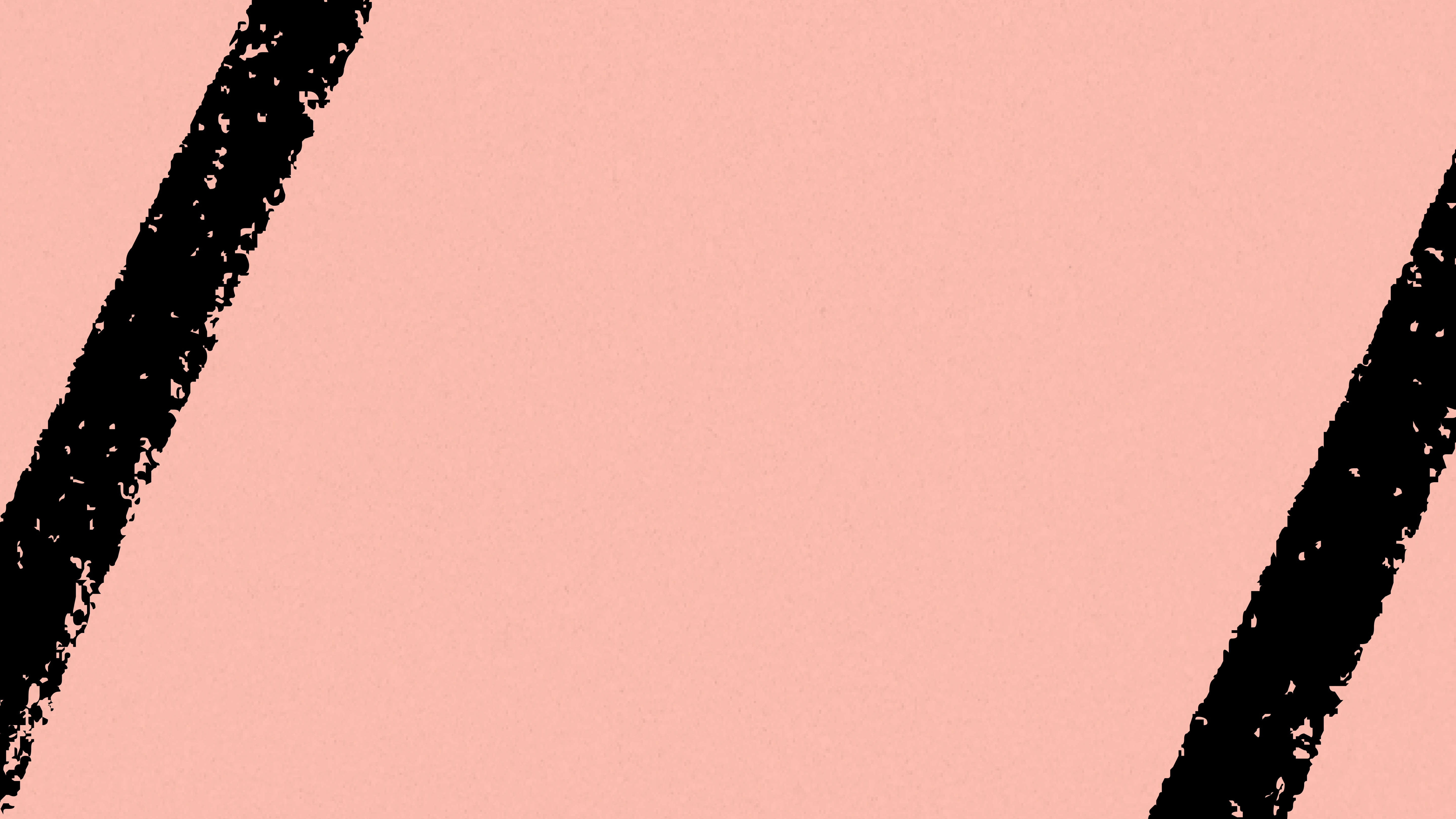
In Part 7, I argued for the importance of interacting with information, instead of just passively consuming it. Interaction results in better learning at the same time as it creates valuable deliverables.
But incorporating all these new ideas about how work is completed – flow cycles and intermediate packets, downscoping and evolving deliverables, interaction over consumption – can be a little overwhelming. You may be wondering, “how do I know which of these techniques I should be doing at any given time?”
There is a very simple model drawn from Design Thinking that is helpful when thinking about abstract work. It is called divergence and convergence.
The basic idea is that all creative work is completed in one of these two modes, which alternate back and forth:
In divergence, you are widening the range of possibilities, options, ideas, and pathways you’re considering. This could look like:
- Strolling through a bookstore to see what catches your eye
- Browsing the web to look for helpful articles or tutorials
- Talking to a friend about ideas for a new project
- Reading your notes on a book to see if they’re useful for a current problem
In divergence, you are consuming diverse sources of information, investigating new approaches and ways of thinking, and experimenting with different solutions. The number of things you are looking at and tracking is increasing – the scope of your work is diverging from an initial starting point.
Then at some point, you must start converging on a conclusion, decision, or deliverable. This could look like:
- Setting aside a bunch of tasks to focus on the one you think is most important
- Ignoring a list of online articles to dedicate your attention on the ones you think will be most valuable
- You decide on a particular deliverable you will produce, eliminating any information that isn’t needed from consideration
- You start creating a deliverable, with all the small decisions and tradeoffs inherent along the way
In convergence, you are discarding sources of information that aren’t relevant, eliminating options for how to do things, and producing tangible deliverables that can be shared with others – the scope of your work is converging toward an end point.
Both stages are absolutely essential for any kind of generative, creative work. If you always diverge but never converge, you’ll never have anything to show for all your research and learning. Like a car stuck in first gear, you’ll keep learning faster and faster but never slow down enough to arrive anywhere.
But if you just try to converge (and “get it done”) without first diverging (brainstorming and researching), you won’t have any raw material to work with. At some point you must kill off possibilities to allow some of them to come to fruition. Just like a rose bush needs to be pruned of the good roses in order for the great roses to flourish.
What’s so useful about having these two modes in mind is that they require completely different attitudes, approaches, and toolsets. Therefore, you can eliminate about half of your potential choices about how to work just by identifying which mode you’re in.
Which tools or approaches you can use are pretty much determined by the mental “environment” of each mode, much like the beach and the ocean require very different behaviors, despite being closely related.
If you try to be determined and focused in Divergence Mode, you’ll miss possibilities and stay confined within your narrow view. But if you try to be playful and exploratory in Convergence Mode, you’ll have lots of half-finished projects lying around.
Most people tend to specialize in one or the other. Early in life they exhibit a tendency toward discovery and ideation, or toward execution and implementation. And then they get pigeonholed as “an idea person” or “an execution person” and have that identity continually reinforced at school, at work, and in society at large.
But the new economy favors those who can operate at all points of the spectrum. Who can integrate different ways of working, cross disciplinary boundaries, and adapt to whatever the situation requires.
Just-in-Time Project Management seeks to provide structure and support all along the spectrum, so you have a scaffolding for the parts you’re less familiar with, and fly free when you don’t need it.
Inspiration from other disciplines
Another benefit of the divergence/convergence model is that because it is so fundamental to all creative work, it helps us identify and borrow techniques from other creative fields.
Painters will diverge by sketching, throwing paint on the canvas randomly, and making multiple variations of the same piece. They’ll converge by choosing a subject, committing to a medium, and showing their work to others.
Engineers will diverge by researching all the possible solutions, testing the boundaries of the problem, and tinkering with new tools. They converge by deciding on a particular approach, designing the implementation details, and making the hardware or software.
Writers will diverge by free-writing whatever comes to mind, writing different variations of the same scene, and moving passages around. They’ll converge by settling on a plot point, killing off a character, and sending their manuscript to the publisher.
Dancers will diverge by improvising, trying new movements, and dancing with new partners. They converge by choreographing a routine, teaching others, and performing for an audience.
Designers will diverge by collecting lots of samples and patterns, talking to users to understand their needs, and listing assumptions. They’ll converge by deciding on a design problem, sketching out wireframes, and translating their designs into graphics files.
Photographers will diverge by taking photos of anything they find interesting, juxtaposing different kinds of photos together, and experimenting with new lighting or framing techniques. They converge by choosing the shots for a collection, deleting unused images, and framing their favorites.
All of these disciplines have centuries of experience in structuring their work. We can and should borrow their toolkits to make our own work as efficient and creative as possible.
Follow us for updates on Twitter, Facebook, Instagram, LinkedIn, or YouTube.
The Only Subscription
You Need to
Stay at the
Edge of AI
The essential toolkit for those shaping the future
"This might be the best value you
can get from an AI subscription."
- Jay S.
Join 100,000+ leaders, builders, and innovators

Email address
Already have an account? Sign in
What is included in a subscription?
Daily insights from AI pioneers + early access to powerful AI tools
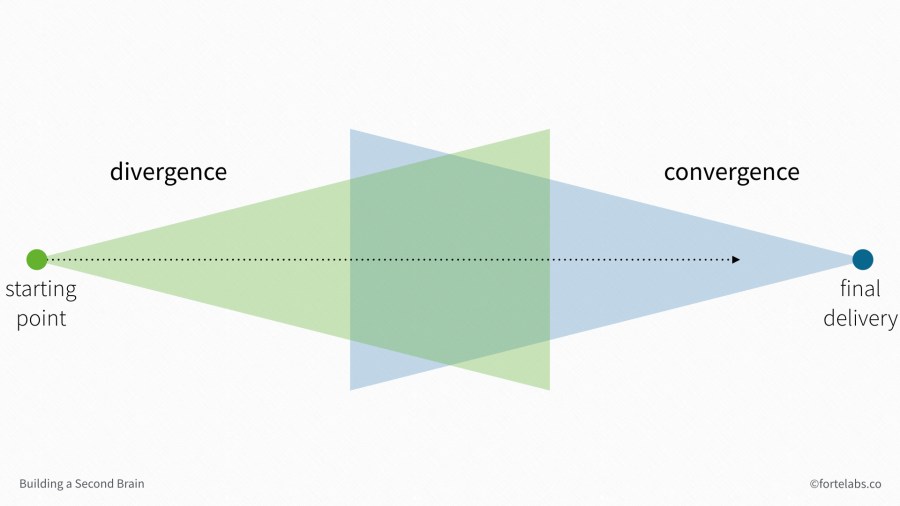
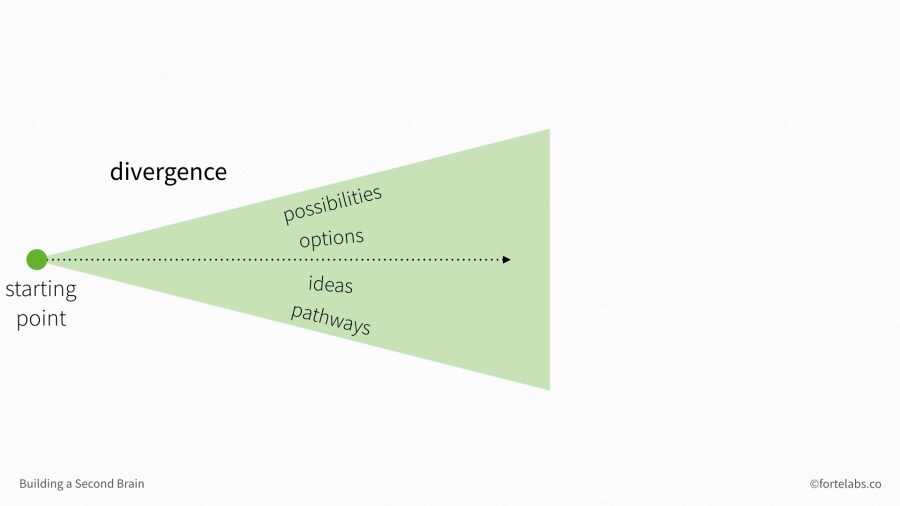

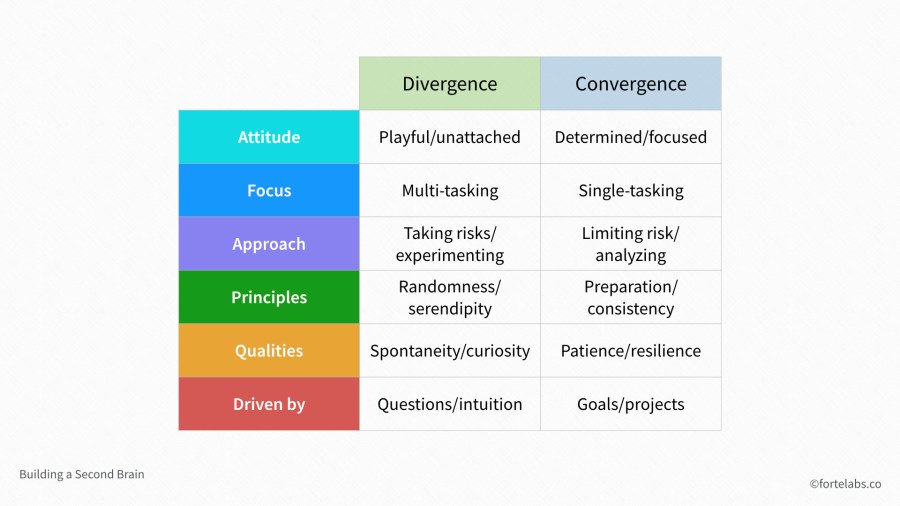
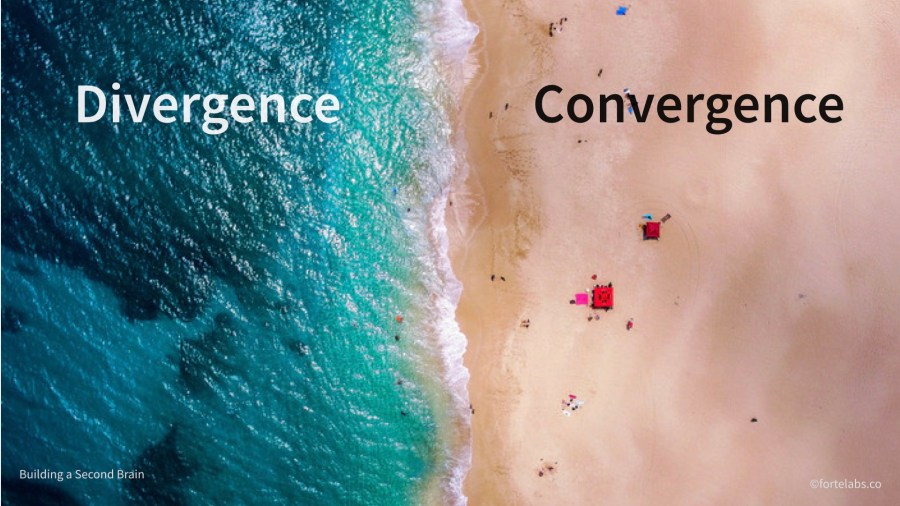







Comments
Don't have an account? Sign up!